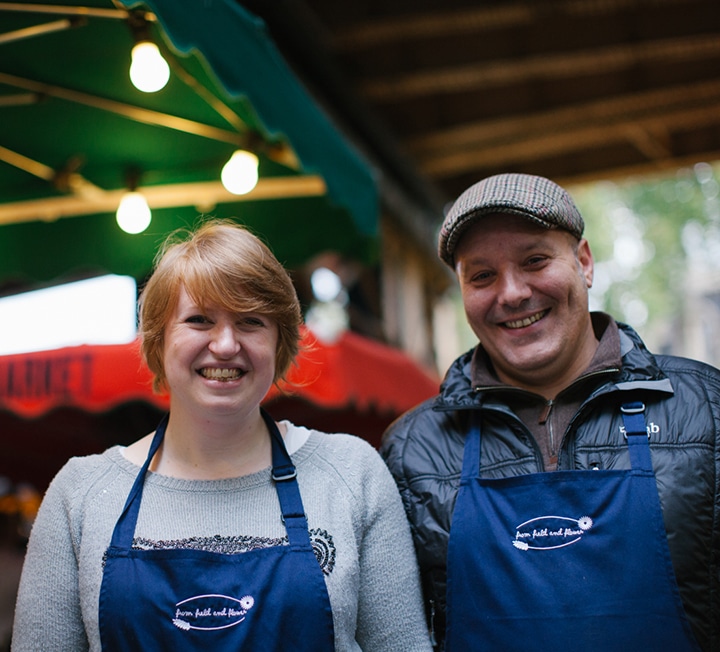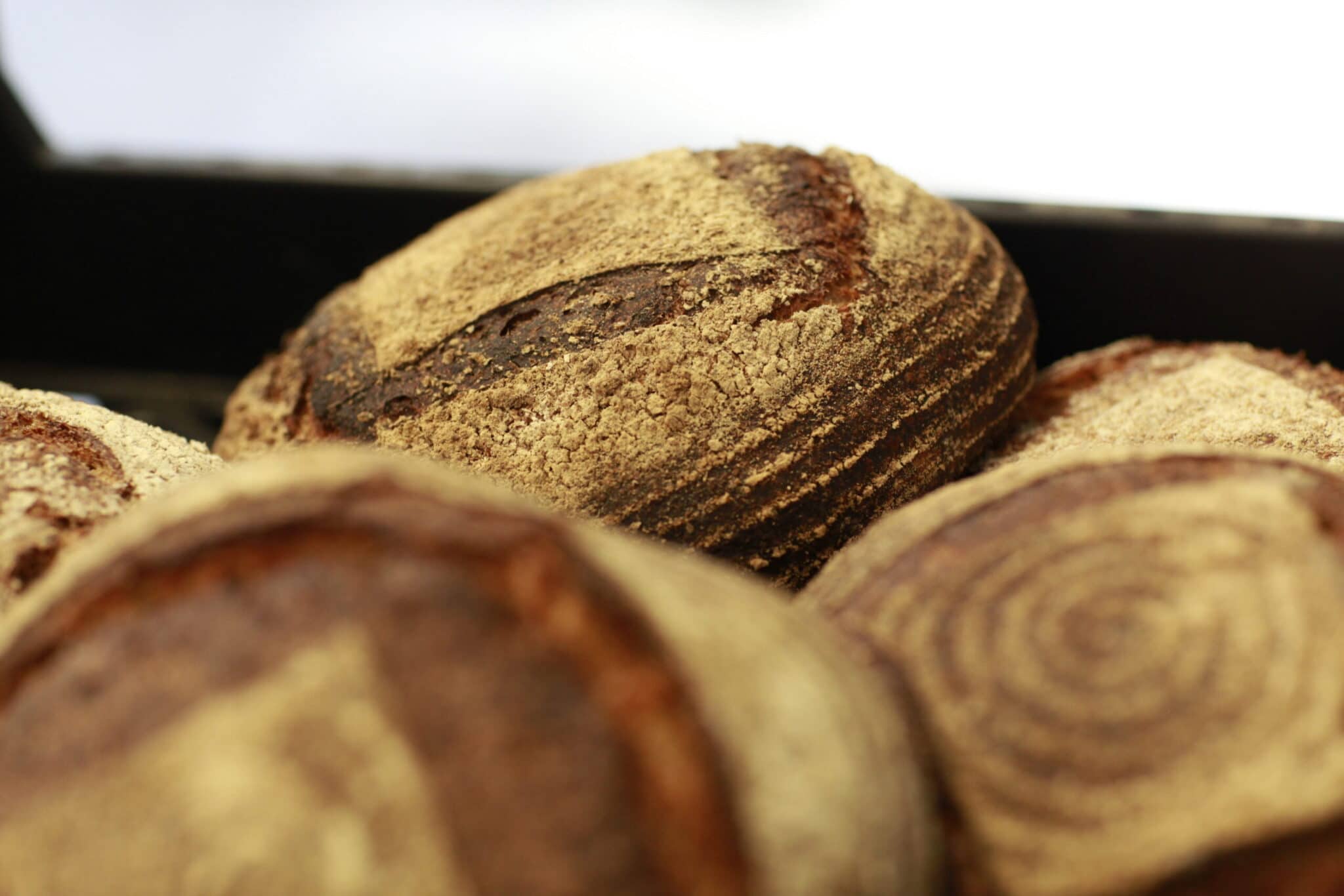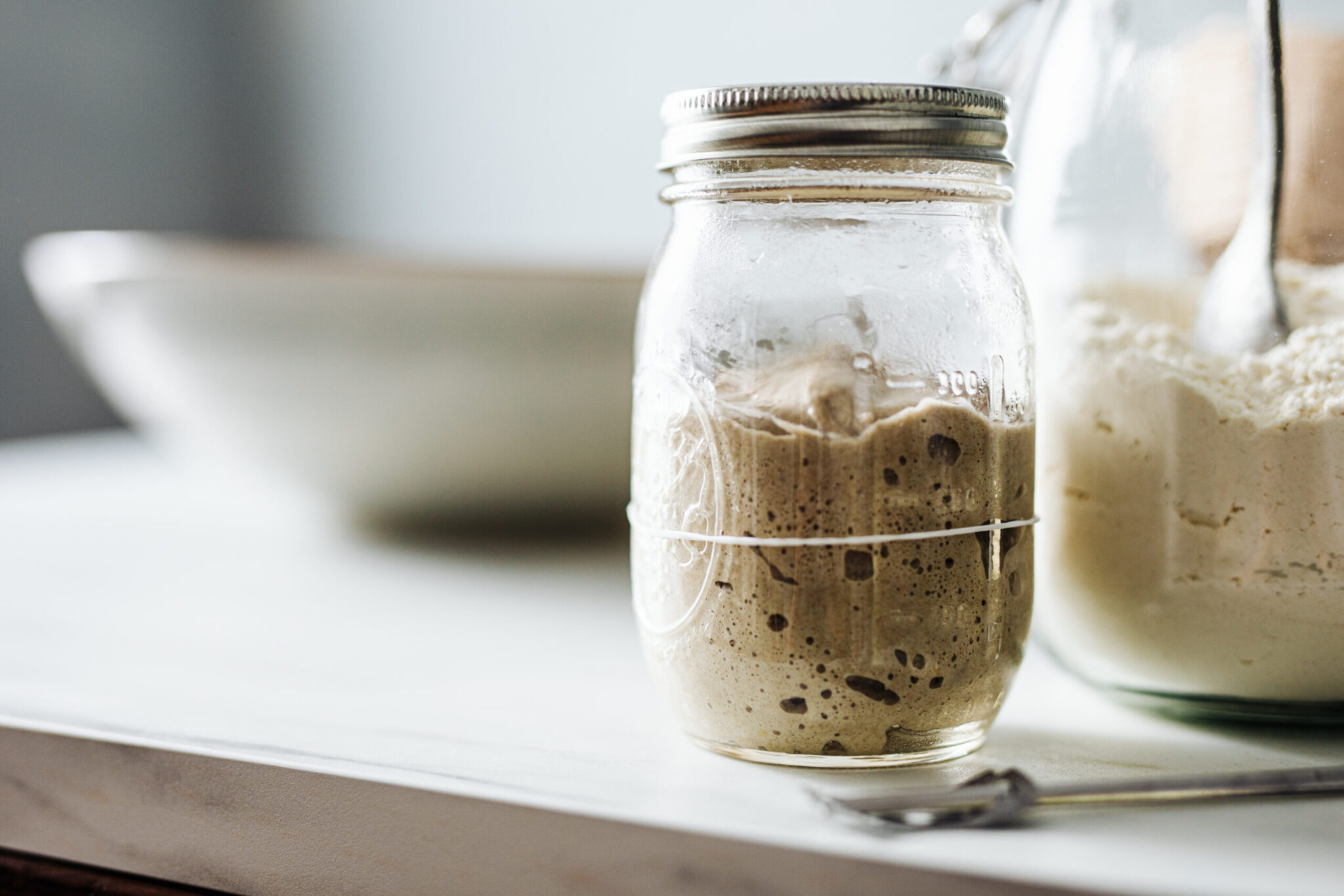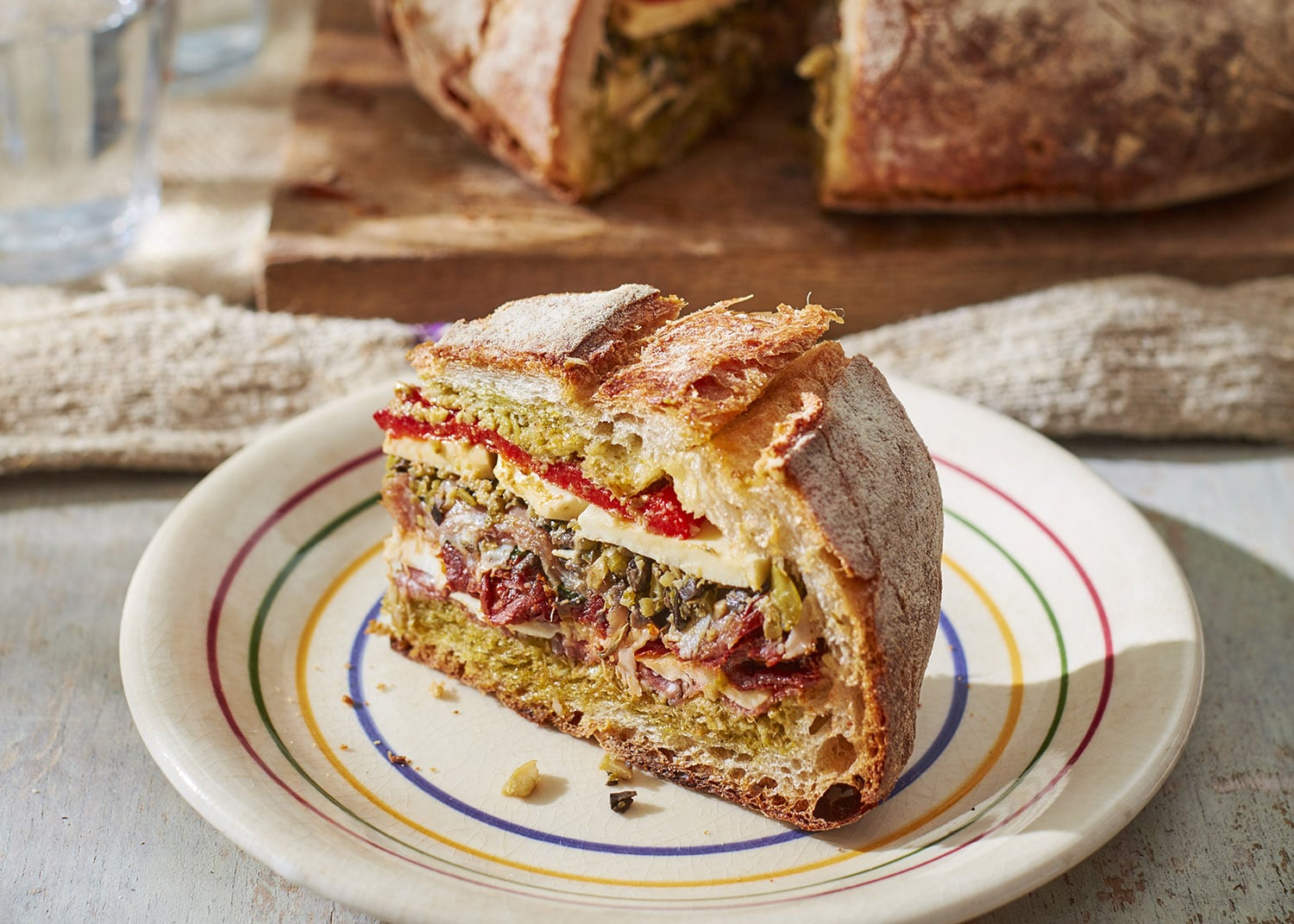Sourdough bread
A simple recipe for a perfectly turned out loaf from the senior sous chef at River Cottage
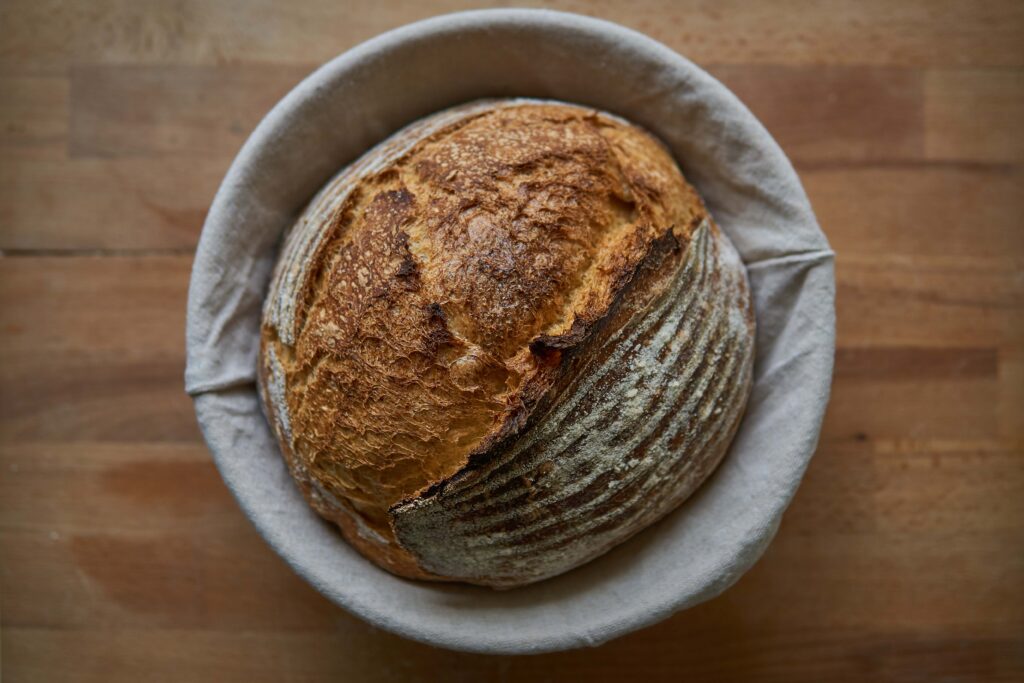

Recipe Meta
Prep
5 mins (plus up to 19 hours proving)
Cook
40-55 mins
Serves
Makes 1 large loaf
Difficulty
Medium
Ingredients
- 400g organic strong white bread flour
- 100g 100 per cent wholemeal organic flour (stoneground if possible)
- 350ml water, room temp
- 150ml active sourdough starter
- 7½-10g salt
Method
The first and most important thing we have to do is make sure your starter is good and active. Whether your starter was in the fridge or at room temperature, you need to tip away all but 1 tbsp. Now measure 75ml water, 75ml flour and stir into the starter to feed it. This will give us enough to make a loaf and still have a little left over. If you’re making more than 1 loaf, increase the quantities as necessary.
Leave the starter out at room temperature for at least 6 hours if your kitchen is very warm, or more normally around 8-10 hours until the starter increases in volume and shows some clear signs of activity. There will be bubbles and interesting smells.
Many problems with sourdough baking can be traced back to the activity of the starter. If you don’t bake regularly then it may take 2 or 3 feeds to get the required strength to make superb bread. If you are doubting the strength of your starter, it may be wise to discard all but 1 tbsp again and wait at least another 6 hours so that the strength is improved. You’ll have much better bread in the end by paying attention to the starter in the beginning.
Now for the dough. Get your water accurately measured into a jug. In a large mixing bowl, place your flour and make a well in the centre. Pour your starter into the water. It may float, which is a good indicator that it’s active and ready to use. If it doesn’t float then don’t worry too much as there can still be plenty of activity in a healthy starter.
Mix the starter into the water then pour into the flour. Do not add the salt yet! Bring the dough together as gently as you can – this should take no more than 30 secs. Give the remaining starter a little feed and place back in the fridge.
Cover and leave the dough for 30mins-1 hour. This gives the dough and starter a chance to start growing together and form a stretchy network of gluten.
Place the salt on top of the dough, pour a little water over your hands, then gently bring the salt through the dough. The dough will start to tighten up a little and look like it has been fully developed. Again, this should take no more than 30 secs. Cover your dough and leave to prove – a room temperature of around 20-24C plus is ideal. I leave the dough for 30 mins before I start developing the gluten through a series of 3 folds with 30 min rests between each one.
Uncover your dough, dip your fingers in water and gently loosen the dough away from the bowl, one by one stretching each of the 4 corners of the dough up as high as they want to go without tearing and lay over the top of the previous one. Those four movements count as 1 ‘fold’.
Leave to rest for 30 mins and repeat until the dough has had 3 folds. Leave the dough another 30 mins. Our dough will have now been proving for 2.5 hours.
Place on a lightly floured surface, being careful not to rip or knock too much air out. Pre-shape into a round by gently folding the corners of the dough in to meet in the centre, then flip it over, dust with flour and leave to bench rest for at least 15 mins and up to 30. Get rid of excess flour on the work bench.
Finally, shape your dough into your desired shape. For a round, flip the dough over and bring the dough from the outside into the centre about 5 times, flip it over again and use the dough scraper to help push it into a tight round. Place into a floured proving basket or mixing bowl lined with a floured tea towel. Leave to rise at room temperature for roughly 2- 3 hours, place in a cool place to slowly prove for around 8 hours at 8-12C or in the fridge for at least 15 hours. You can be clever with the proving times if you like, for example give the dough 1-2 hours at room temp then put into the fridge overnight for a longer, slower prove.
To bake, have your oven set to 240C with a heavy tray, baking stone or casserole dish in there getting hot.
When you push a floured finger about 1cm into the dough it should spring back very slowly but decisively and leave a little indentation. This is a good indicator your dough is ready to bake.
Upturn the loaf onto the hot tray, baking stone or casserole dish. With a sharp knife or razor blade, slash the top of your bread then nice and fast, place it in the oven. (Put the lid on the casserole). Spritz the oven with water to create steam (you don’t need to do this with a casserole).
Bake for a good 35-45 mins, turning halfway through, or in the case of a casserole lift the lid off halfway through, turning the oven down to 220C when you do. When the loaf is ready it should have a deep golden crust and when tapped on the bottom, should sound hollow and feel crusted. If you feel it needs a little longer, bake for a further 5-10 mins. Cool on a wire rack.
Store your bread in paper, linen or a well-ventilated bread bin – never in the fridge or wrapped in plastic. Stored like this your bread will eventually stale rather than go mouldy. It can be toasted, crumbed or used in cooking as needs be.
Your bread will freeze well, just make sure you do it once it has cooled completely and while it is fresh – just wrap it in a bag and defrost at room temperature.
I hope you enjoy your baking journey.
